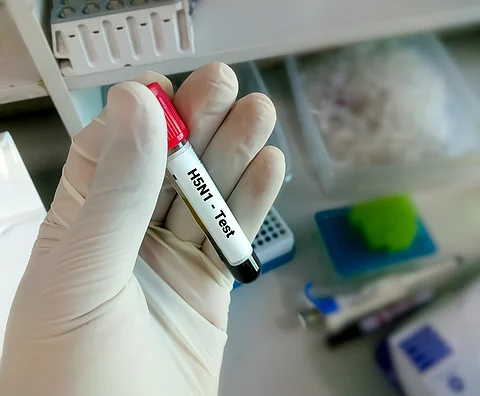

A strain of H5N1 avian influenza isolated from a human patient in Texas exhibited multiple unique mutations compared to the version found in dairy cattle, a study by scientists from Texas Biomedical Research Institute (Texas Biomed) has revealed.
The discovery raises concerns about the evolving threat of the H5N1 virus of Highly Pathogenic Avian Influenza (HPAI), which has been affecting a wide range of species, including poultry, wild birds, mammals and humans.
The study, published on January 8, 2025, in the journal Emerging Microbes & Infections, identified nine mutations in the H5N1 strain found in the human sample. These mutations enable the virus to replicate more efficiently in human cells and increase its ability to cause severe disease and fatality in mice, compared to the strain found in cattle.
Since the beginning of 2024, the clade 2.3.4.4b of H5N1 has impacted approximately 928 dairy herds in the United States, infected 67 humans and resulted in the death of millions of birds. The case in Texas was reported in March 2024, when a dairy farm worker, who had been splashed with infected milk, developed redness and discomfort in one eye. It is suspected that the infection was acquired through contact with the contaminated milk.
“The clock is ticking for the virus to evolve to more easily infect and potentially transmit from human to human, which would be a concern,” Texas Biomed Professor Luis Martinez-Sobrido told medical news website News Medical Life Sciences.
Nine mutations seen in the human H5N1 strain were absent in the version isolated from cattle, the researchers found. The human strain, labelled H5N1 HPhTX, exhibited distinct genetic variations from the bovine strain, suggesting that the virus may have rapidly mutated after infecting the human host.
“It is not known if HPhTX gained these amino acid changes in cattle as part of a zoonotic process or after viral transmission and infection in the human host. The fact that these changes are not present in cattle isolates, including HPbTX, suggests the possibility that the virus rapidly mutates after human infection,” the study noted.
To further confirm these findings, the researchers introduced the strain into mice. They found that the human-derived strain replicated more efficiently, causing more severe disease in the animals compared to the bovine strain. The human strain was also detected in significantly higher quantities in the brain tissue of the mice.
“These genetic changes could have been acquired in the new (human) host due to virus adaptation after infection to improve viral fitness, or in the intermediate animal host (cattle) as part of a zoonotic process to allow cattle-to-human virus transmission, or both,” the researchers said. The unique mutations were likely acquired during the adaptation process following transmission to the farmworker, they added.
In addition to studying the virus’s mutations, the team assessed the effectiveness of the US Food and Drug Administration-approved antivirals against both the human and bovine strains. Fortunately, the mutations did not appear to affect the antiviral efficacy, they noted.
These adaptations could increase the likelihood of H5N1 viruses gaining the ability to transmit from human to human, the scientists concluded. They called for continued monitoring of human H5N1 strains to assess public health risks, and for efforts to eradicate H5N1 from cattle populations to prevent further human infections from these mammalian-adapted viruses.
In December 2024, a separate study published in the journal Science highlighted that the H5N1 virus is just one mutation away from becoming transmissible between humans. On January 6, 2025, the Louisiana Department of Health reported the first human death from HPAI H5N1 in the US, a 65-year-old person.